Window shutters: an open and shut case
Window shutters: an open and shut case
If you’re looking to improve your home, why not invest in window shutters? They create kerb appeal, keep out the cold and work well in any room whether it’s the living room, bedroom or bathroom.
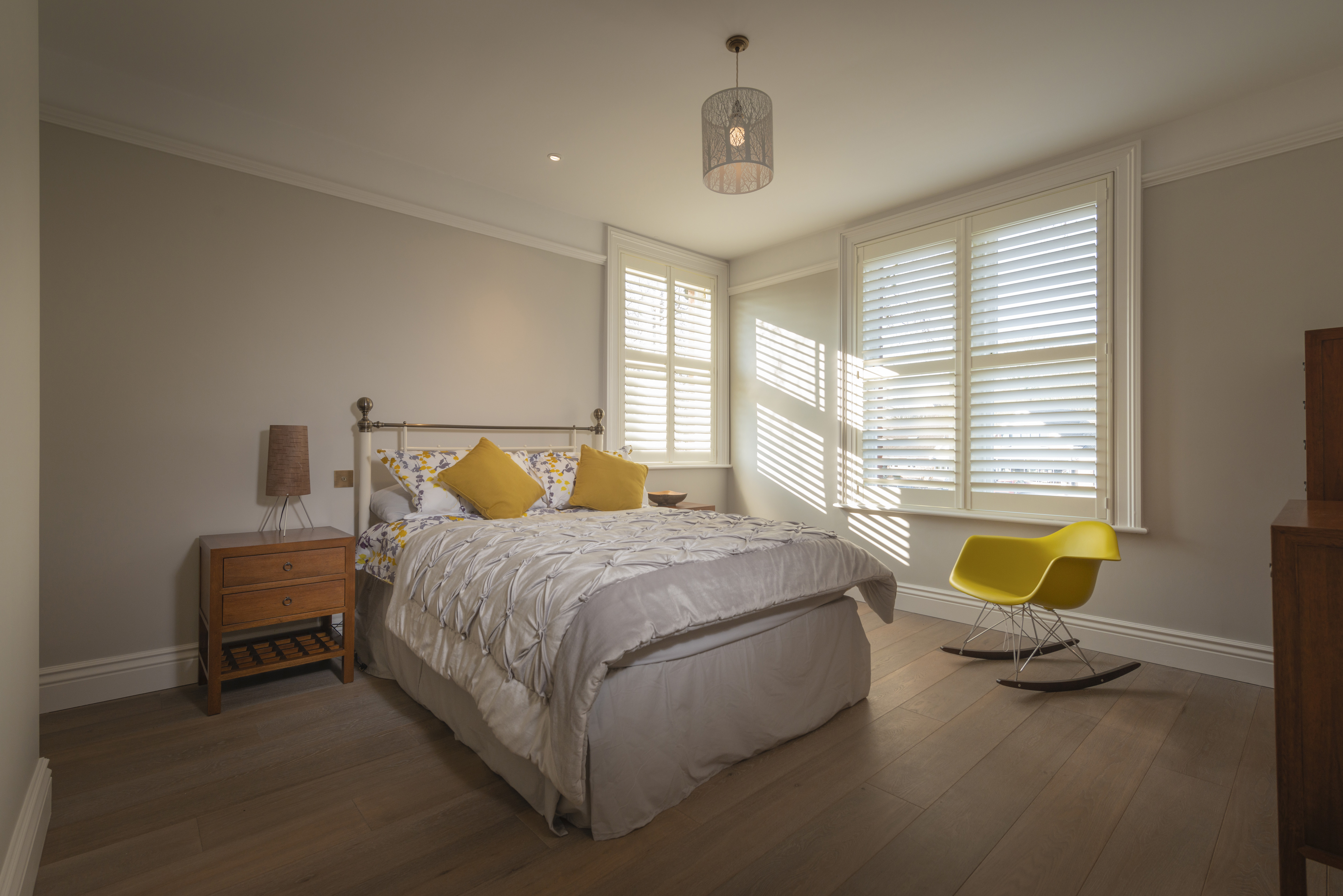
Image supplied by The Great Shutter Company
Where to fit shutters
Interior shutters, also known as plantation shutters, can bring style and elegance to any house. Both practical and chic, they offer privacy and shade while still letting in light. As well as keeping homes cosy in winter and cool in summer, shutters look great inside and out. If you’re on a tight budget, fit them at the front of your house to impress potential buyers. “Shutters have grown in popularity because they are such a versatile window covering. We install shutters in all sorts of houses from period properties to new-builds on housing estates and home extensions with bi-fold patio doors,” said Mike Schnuppe, owner of The Great Shutter Company.
Which shutter style?
The best style is the one that is most suited for your practical day-to-day needs and your window size and shape.
- Full-height shutters, as the name suggests, cover your entire window from top to bottom, offering clean lines and a simple style.
- Café-style shutters cover the lower section of the window only. They can be a good solution for smaller windows as they let in lots of light in the uncovered top half.
- Solid shutters, seen in Edwardian and Victorian houses, is the term given to any shutters with panels that aren’t louvered or slatted. Ideal for classic period styling, they keep out draughts and create a blackout effect when closed. That said, louvered shutters are a more versatile option. They can be adjusted to let in more, or less light and privacy versus views outside.
- Tier-on-tier shutters have top and bottom panels that open independently, so you can let in the light at the top while keeping your privacy at street level. Tall windows can have up to three tiers.
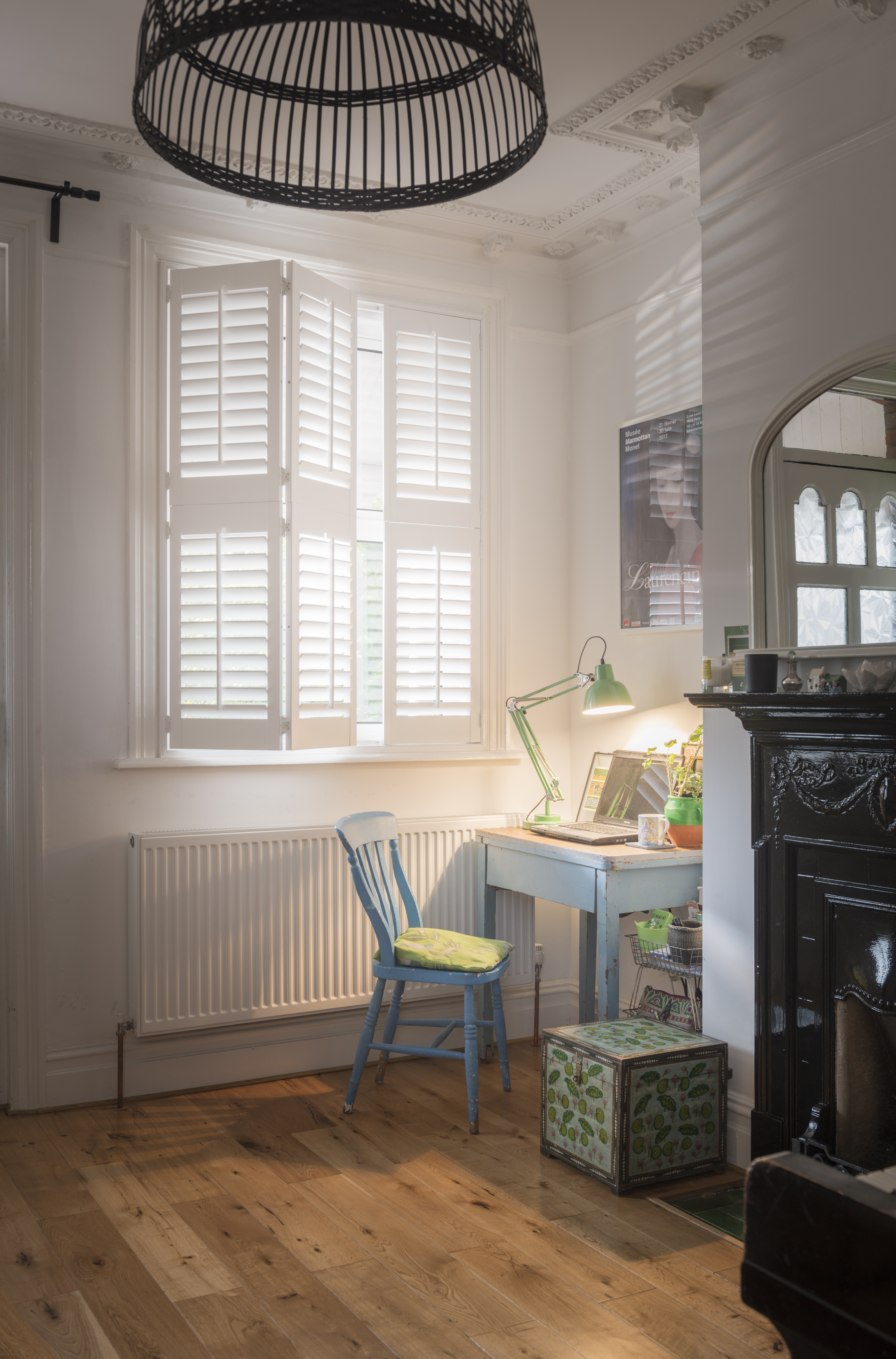
Image supplied by The Great Shutter Company
Material choice
Shutters are available in a range of materials. Hardwood shutters are top of the range and can be stained to show off the timber’s natural beauty. Options include teak, oak, cherry and basswood. Look for sustainably sourced hardwood that complies with European Timber Regulations and the Forest Stewardship Council (SFC) certification. More affordable options include wood composites, such as MDF and plastics like polyvinyl. Plastics and composite woods are warp and moisture-resistant, so better suited to kitchens and bathrooms. A disadvantage of MDF shutters is they are heavier than hardwood, making them unsuitable for large windows. MDF should not be used in any rooms with high condensation levels.
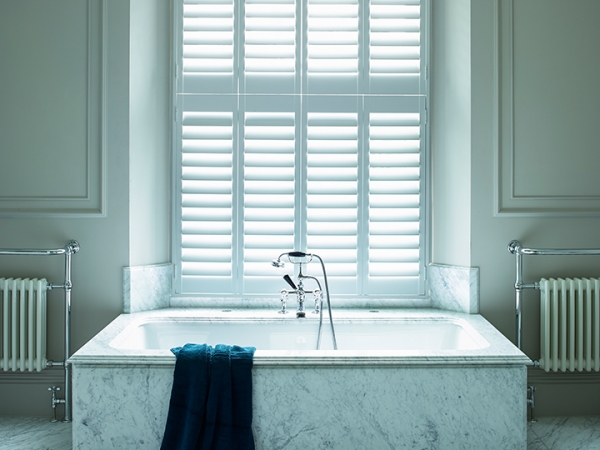
Image supplied by Shutterly Fabulous
Colour options
Plantation shutters are available in painted shades, natural wood stains and customised colour options. White is a highly popular choice. “Ninety per cent of our clients pick pure white because it is future-proof; if the décor changes it’s not an issue as white goes with everything,” said Schnuppe. If you don’t want white, however, shutters are available in a range of other colours: pinks, blues, yellows, greys and black. In addition, some suppliers can colour match shutters to any paint shade. Painting shutters the same colour as your walls (or having them factory-painted to order) can make a small room feel larger. Or choose a bold, contrasting colour to create a focal point.
Different sizes
The slats, also known as louvres come in different sizes. The slat size usually depends on the shape and size of window as well as your design preference. Fewer, bigger slats let in more light and offer a better view while smaller ones afford greater privacy – so it’s worth considering the width that will suit you best. The smaller louver (about 64mm) helps create a classic shutter style. Often, they work best with smaller shutter panels. Middle-sized slats (76mm) are on-trend with fewer slats per panel affording more light and a simpler finish. Larger louvres (89mm), meanwhile, may suit those looking for a chunkier, more industrial look and work best with bigger windows, said Schnuppe.
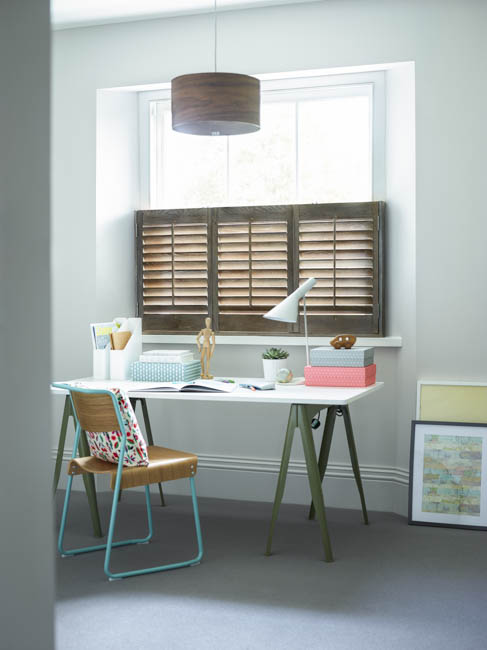
Image supplied by Shutterly Fabulous
Bespoke or DIY
Shutters can be made-to-measure with millimetre precision to fit any shape or size of window, including arched, angled and even portholes. One of the advantages of shutters is they can be folded back to reveal the window frame whereas curtains or blinds will generally obscure part of the window. This means feature windows can be shown off to great effect.
At the premium end of the market, suppliers provide a bespoke service whereby they will measure, make and install your shutters to achieve a perfect fit, from top to bottom. A less expensive option is to measure up your own window, place your order online and fit the shutter yourself. Many companies have easy-to-follow guides for measuring and installing on their websites. However, a full service will get the best result, said Schnuppe. “People think they can fit their own shutters, but the reality is that it’s a really skilled job if done properly.”
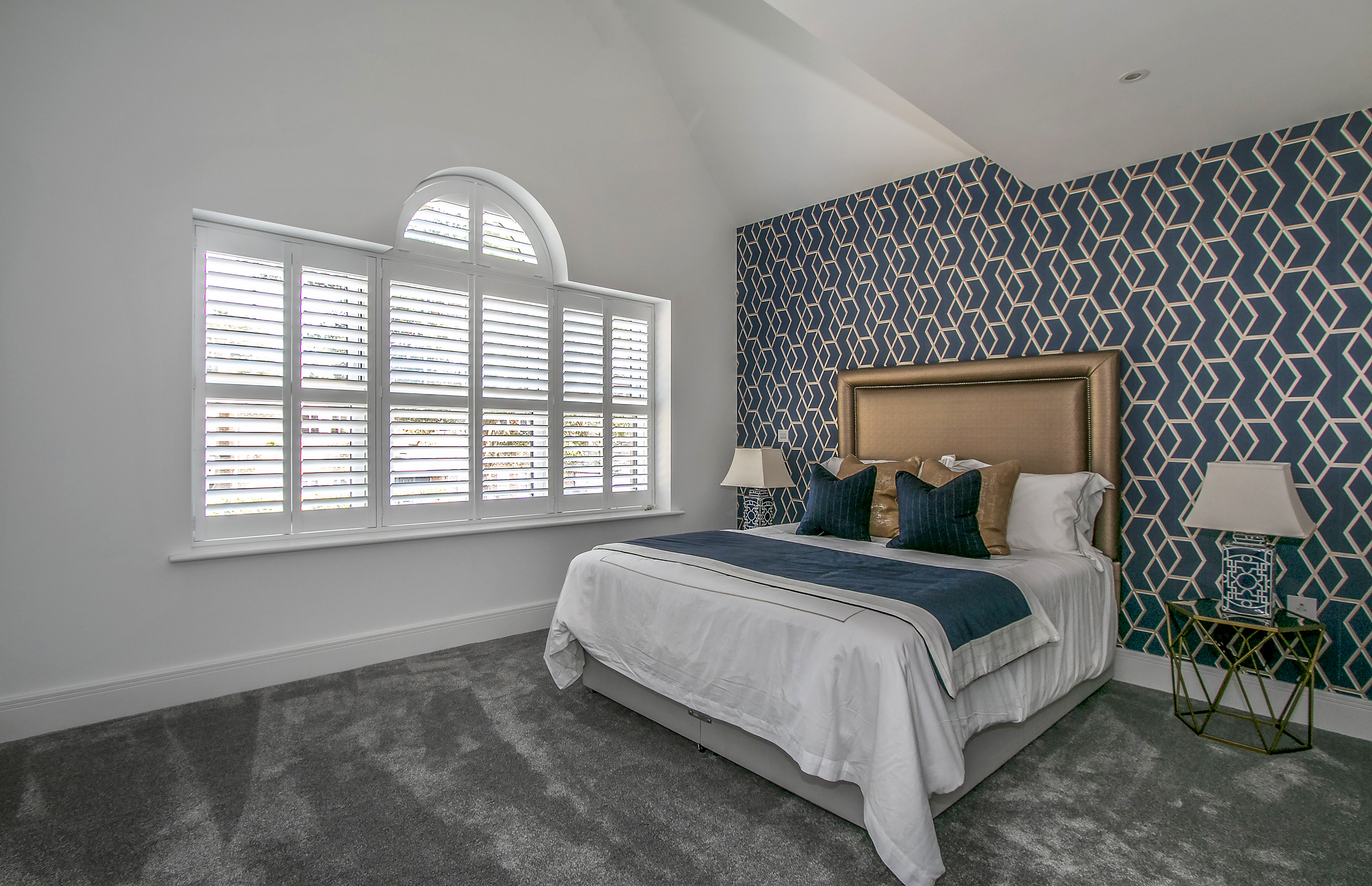
Image supplied by The Great Shutter Company
Cost
The cost will depend on several factors, including the size of your windows and the material you choose. But as a rough guide, MDF entry level shutters with a hidden tilt mechanism and professional fitting, cost around £275-£285 per square metre, including VAT. Premium hardwood shutters are priced higher at around £375 per sqm, including fitting and VAT. Expect to pay more if you live in London or want an express service. If you go down the DIY installation route, you could save around 30 per cent on the average cost.
Remember shutters will last a very long time, so think of them as an investment in your home. “Shutters fitted by a professional fitter will come with a three to five-year warranty, but the reality is they will last well beyond that,” said Schnuppe.
Shutters are very much a fixture, not a fitting, so they’ll potentially add value by smartening the exterior and interior of your home, and, as an added extra, reduce your heating bills. “The exterior of properties, living spaces, bathrooms and bedrooms really benefit from the versatility that window shutters can offer. If your house is adjacent to a busy street, shutters are the ideal solution for balancing both light and privacy,” said Murray Clark, director at Shutterly Fabulous.
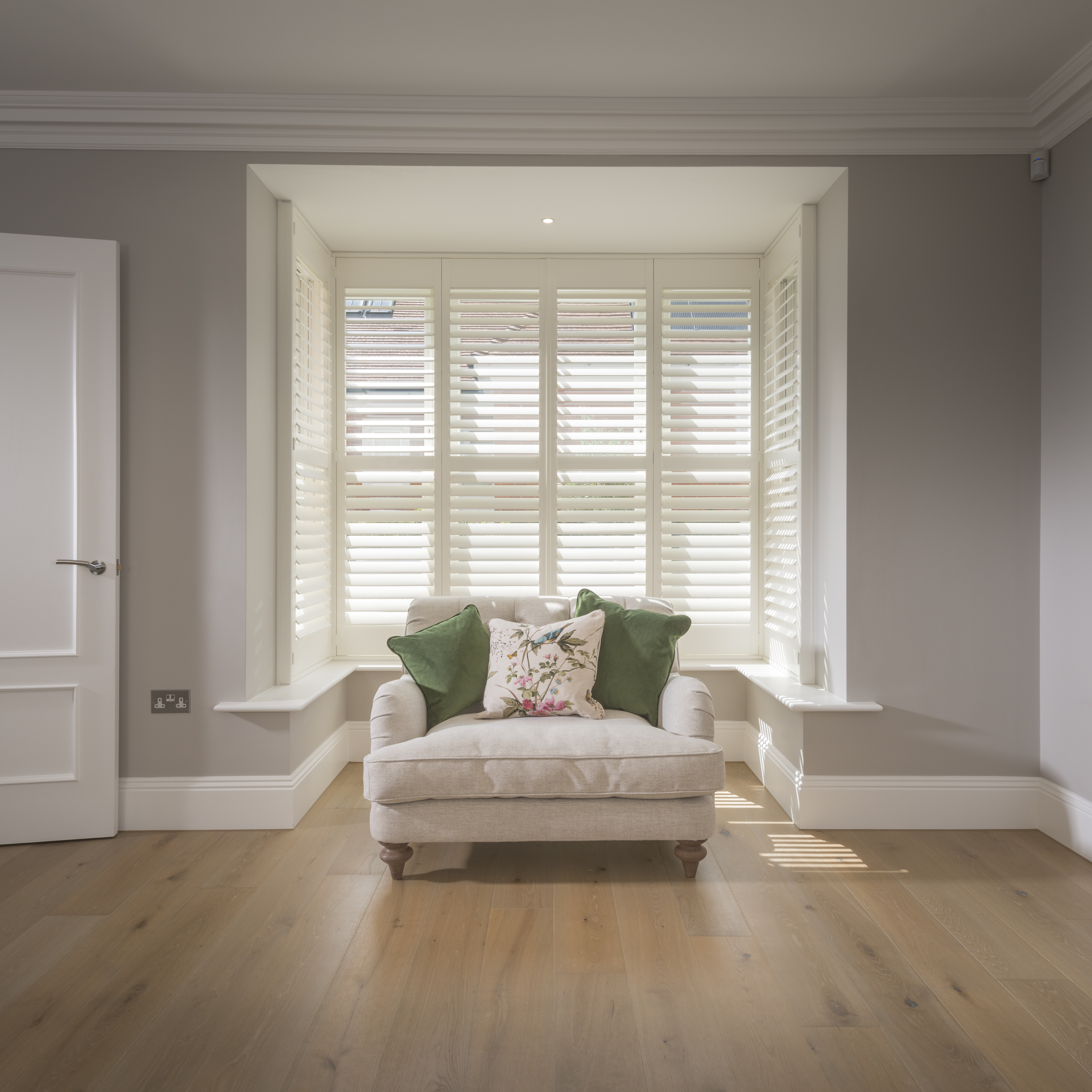
Image supplied by The Great Shutter Company
The Great Shutter Company website: https://thegreatshutterco.co.uk/
